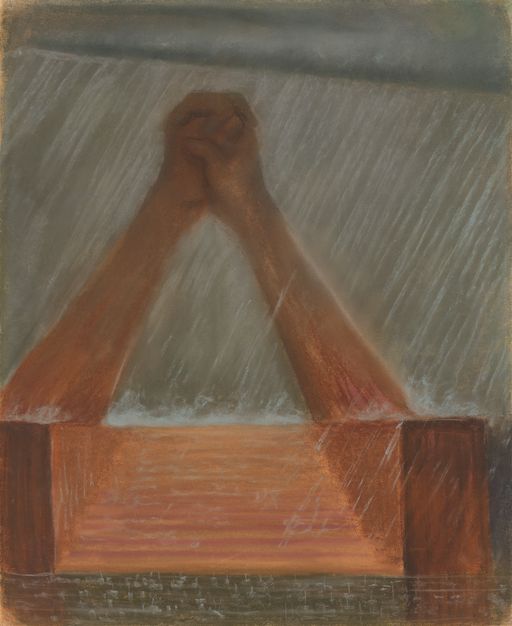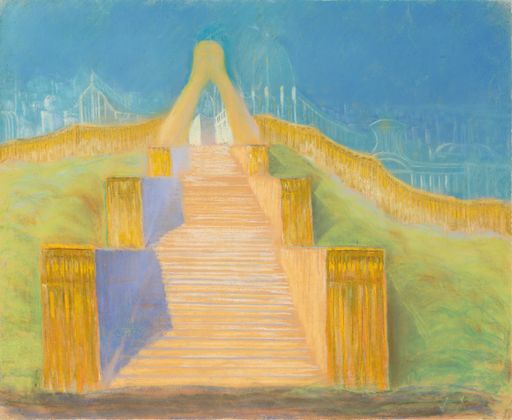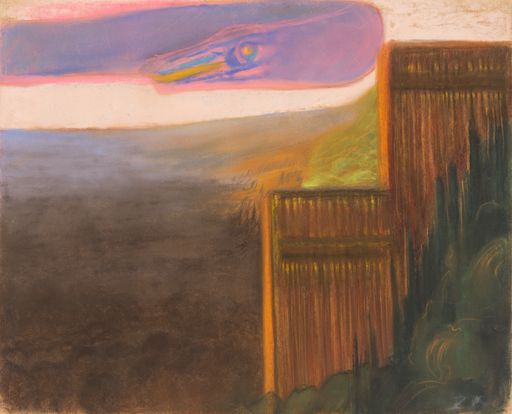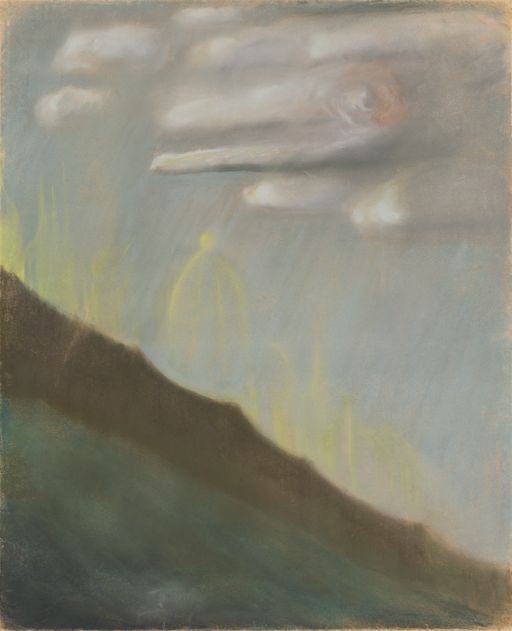Deluge. Cycle of 5 paintings

Deluge. Cycle of 5 paintings
Flood motifs appear in Čiurlionis' work (not only in his artwork, but also his literary images in “Letters to Devdurakėlis”) on various occasions: “I dreamt a terrible terrible dream. It was a dark night, driving rain was beating down and there was nothing around me save for the dark grey ground. I was afraid of the rain, I wanted to run, to run away, but my feet were stuck in the quagmire. <…> The rain only grew stronger and with it grew my fear. When I screamed and yelled out for help, the cold water filled my throat. Suddenly, a frantic thought entered my mind: everything on earth had been drowned, everything – cities, villages, huts, churches, forests, towers, fields, mountains – everything was now underwater. The people had no knowledge of this because it was night-time, and everyone was asleep in their huts, palaces, villas, and hotels. They were in a deep sleep; but they were all drowned men – pale, bloated, and still... <...> The terrifying sound of the rain beating down, hopeless grief and endless fear,” (Čiurlionis, M.K. Apie muziką ir dailę. Vilnius: 1960, 271-272). These very same letters also contain a direct reference to the biblical flood: “We were at the top of Mount Ararat, and you know, my Sweet, that the drops from the last forty days of the rain that flooded the world turned to diamonds.” (Landsbergis, V., comps. Čiurlionis M.K.: Žodžio kūryba. Vilnius: 1997, 72).
Two motifs are predominant in the “Flood” series: hands held up to the sky (forming gateways) and monsters in the sky such as dragons and serpents. The clasped hands in the first painting are like an idyllic prelude to a catastrophe – in later paintings this becomes the symbol of hopelessness and prayer. This is a multi-dimensional image that can be interpreted as a prayer or appeal and a call for rain in the heat, as the colour and mood of the first painting might not only mean a thriving environment, but also scorching heat and fatigue. Rasa Andriušytė-Žukienė links the city depicted here with Gustave Moreau's city of evil. (Verkelytė-Fedaravičienė, B, comp. M.K. Čiurlionis. Paveikslai. Eskizai. Mintys. Vilnius: 1997, 23). The dragon or serpent in the sky can be linked to the symbol of mystical fear prevalent in fin de siècle art.
In world mythology, reptiles were considered to be rulers of the underworld. They possessed the power to control atmospheric phenomena and were mediators between the earth and the heavens who commanded the rain. Serpents are associated with the inexplicable appearance of rain. Different traditions of mythology perceive serpents, dragons, and other reptiles as flood bringers.
Without a knowledge of why rain occurs, primitive man transferred the guardians of water – serpents and dragons – to the clouds. The art of many different cultural traditions depicts them together with storm clouds. They are used to personify darkness, mist, water, rain, clouds, lightning, and storms. It is apparent that they are two-sided symbols: serpents brought storms and catastrophes, but various rituals were also performed in their honour during droughts in the hope that they would bring about rain. Thus, the serpent in Čiurlionis' “Flood” could send rain to a city suffering from drought as well as a flood to a city of evil inhabited by unrighteous men.



